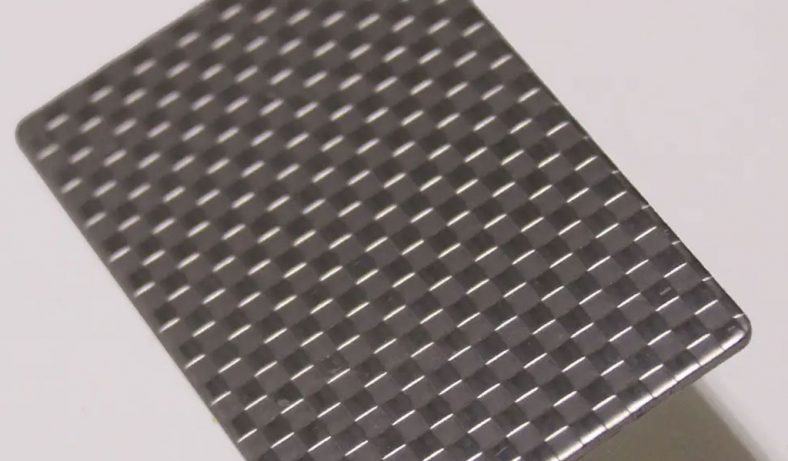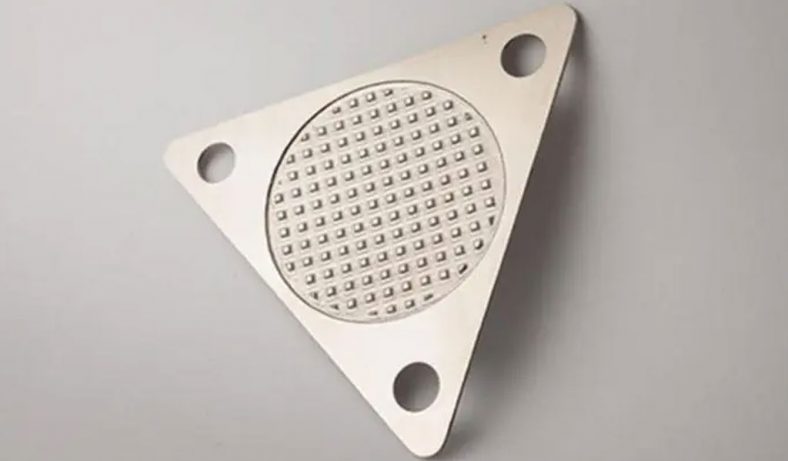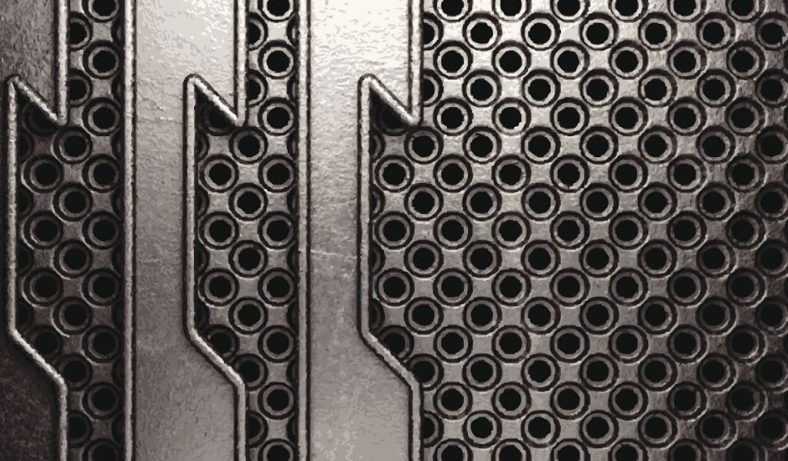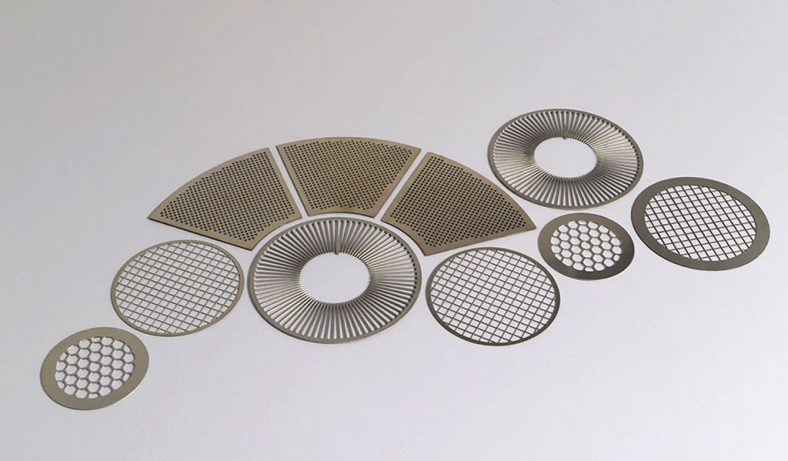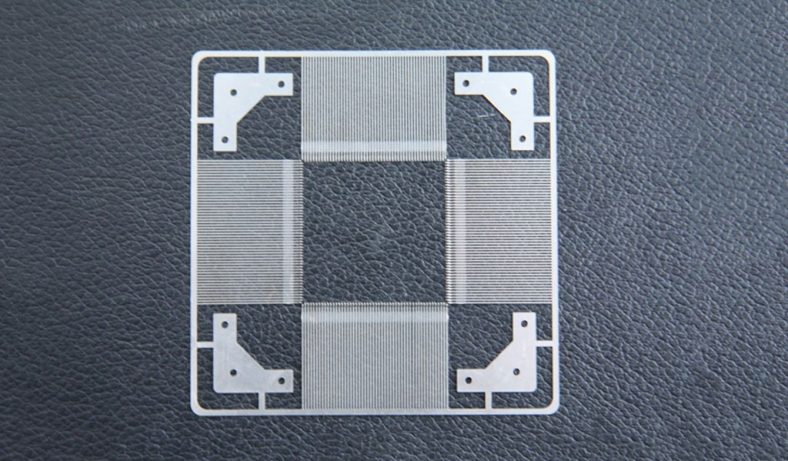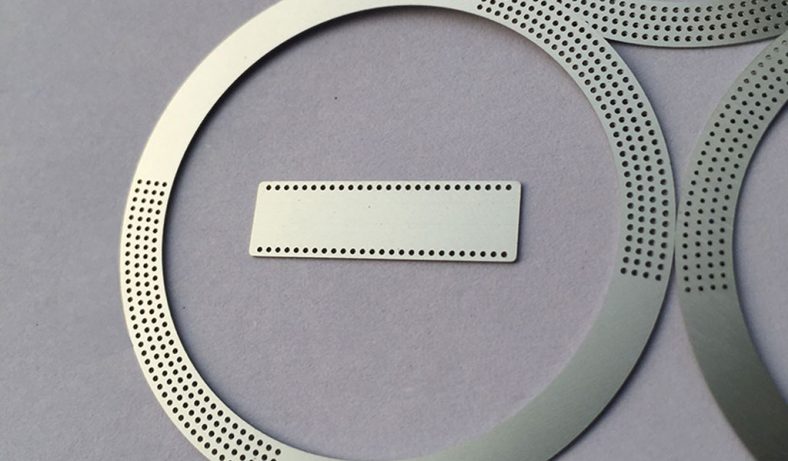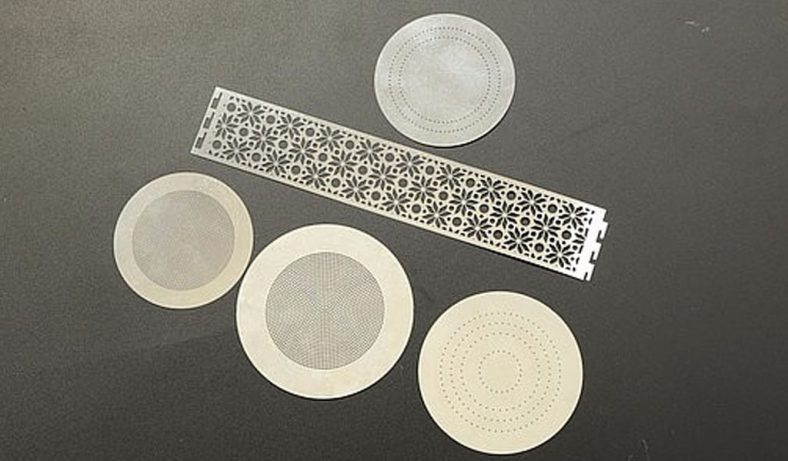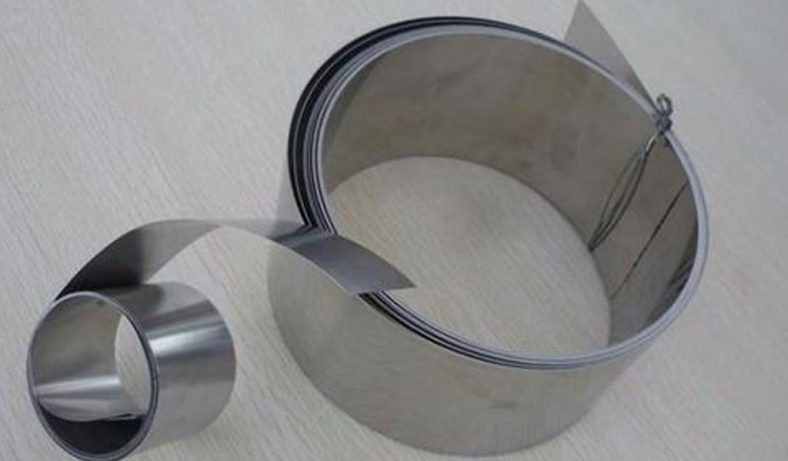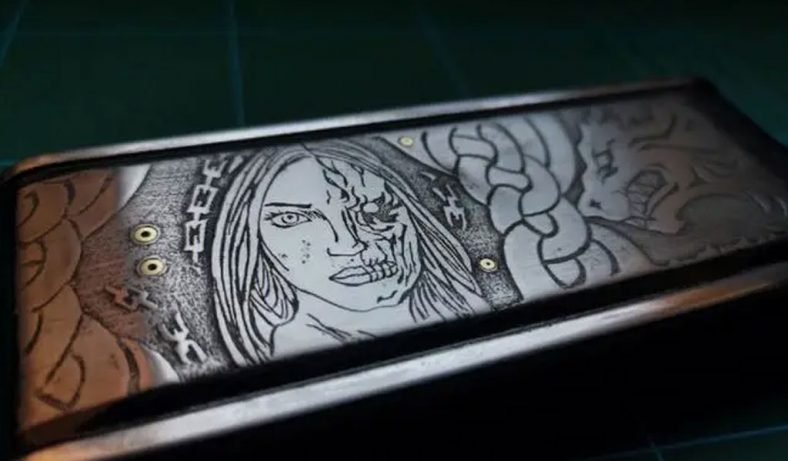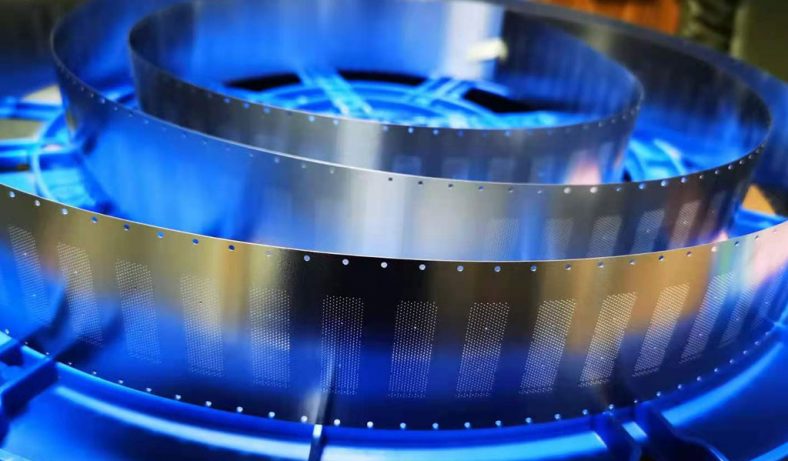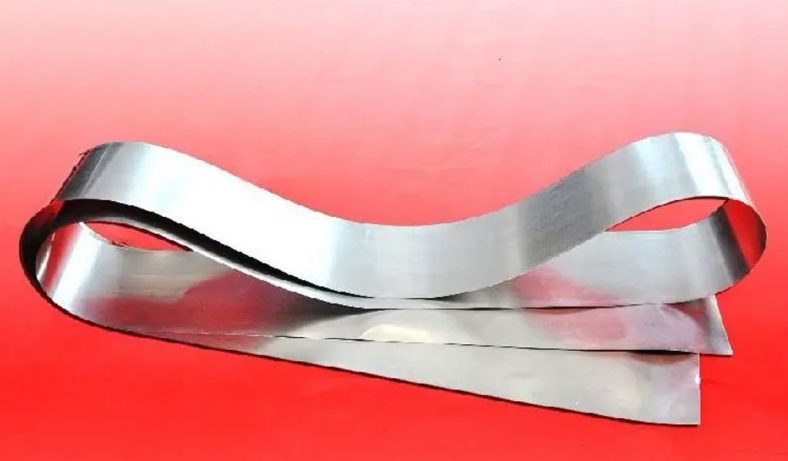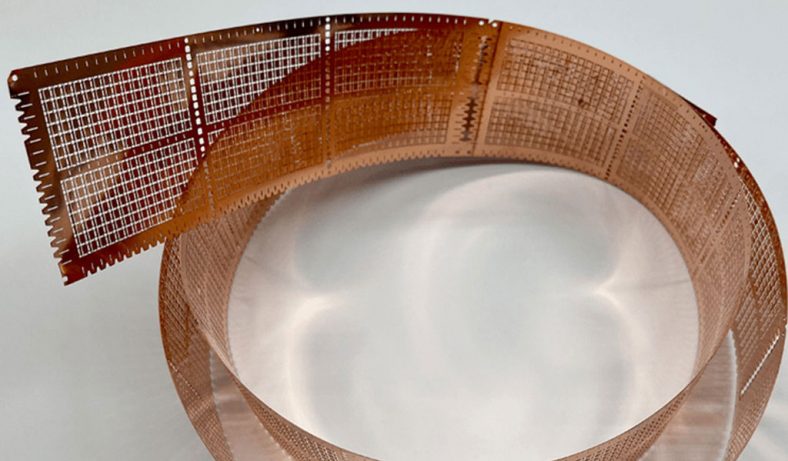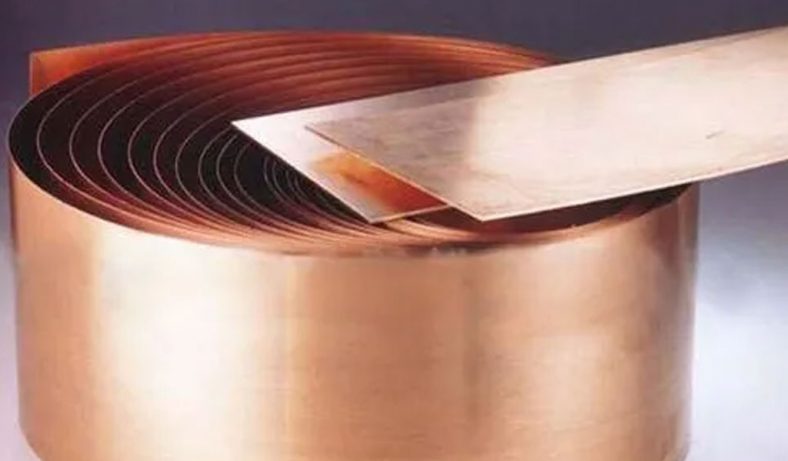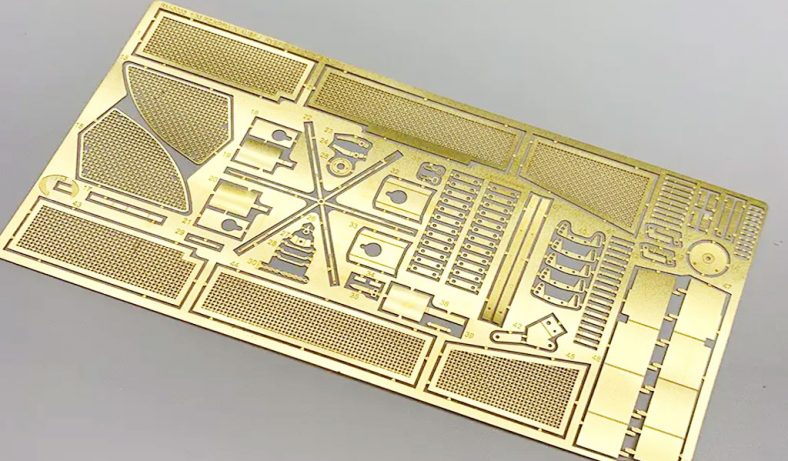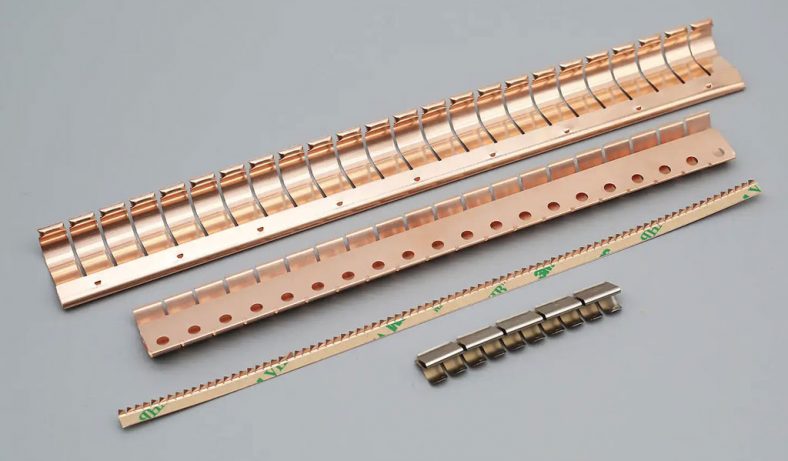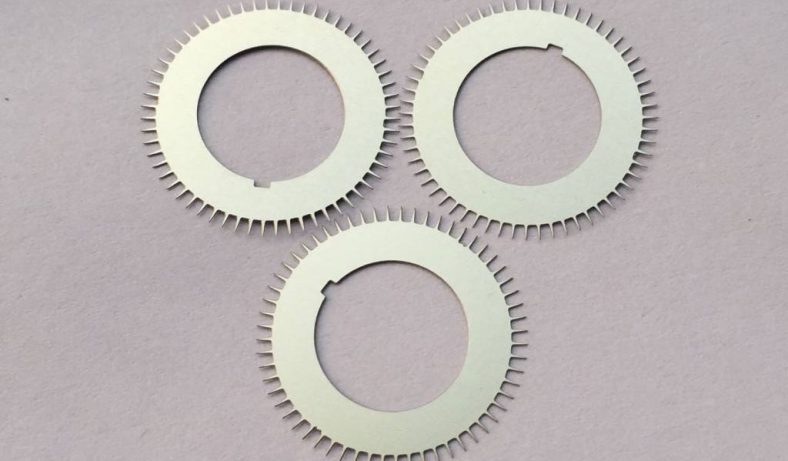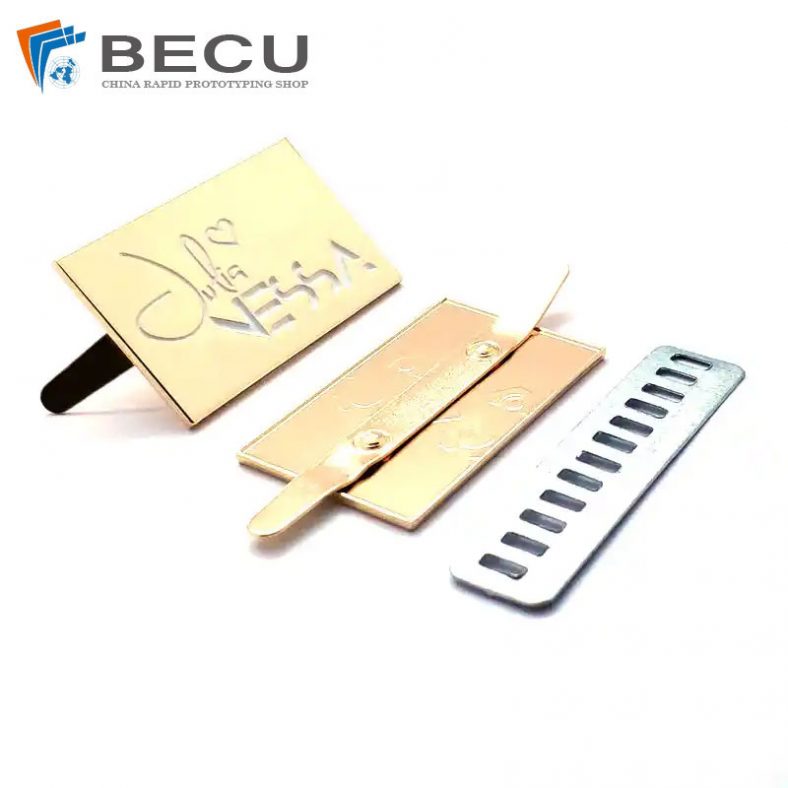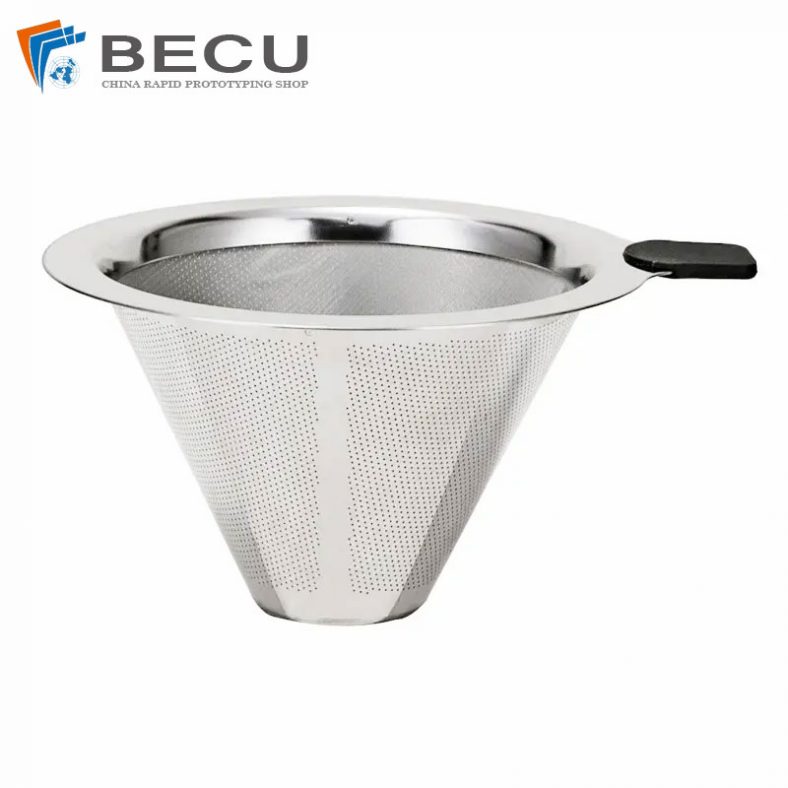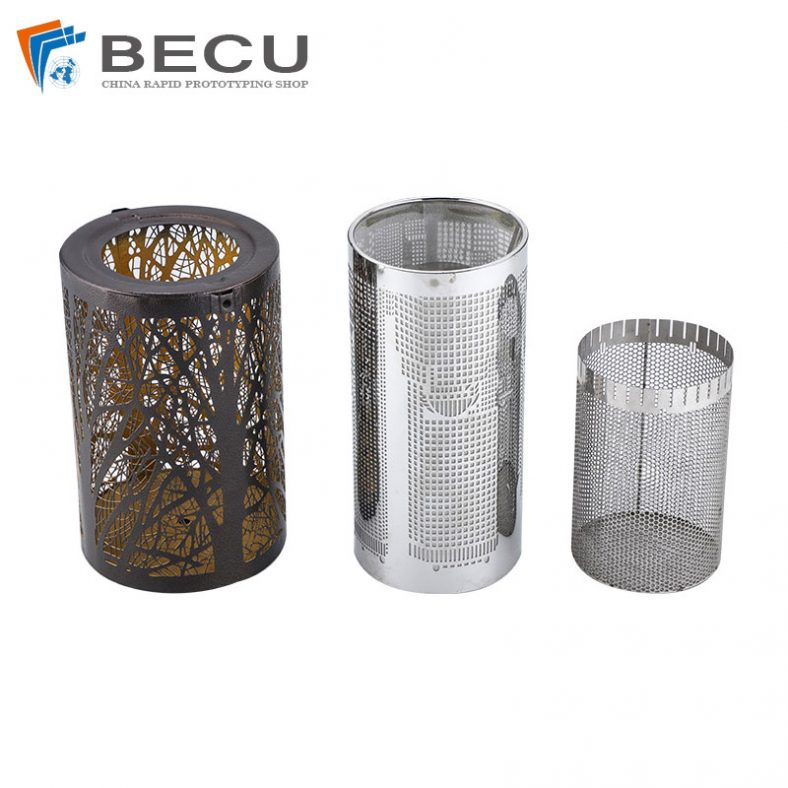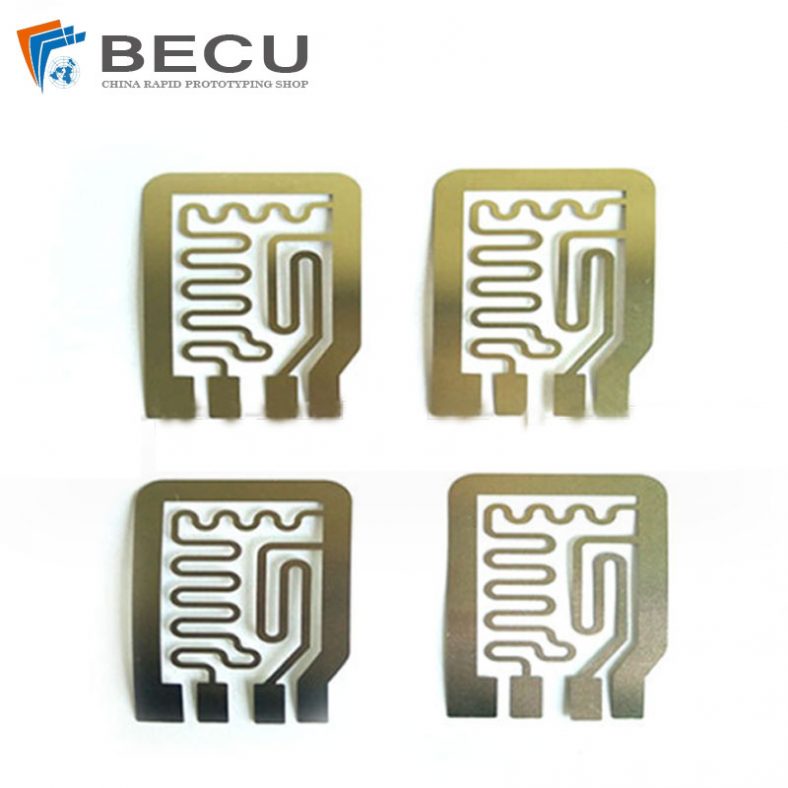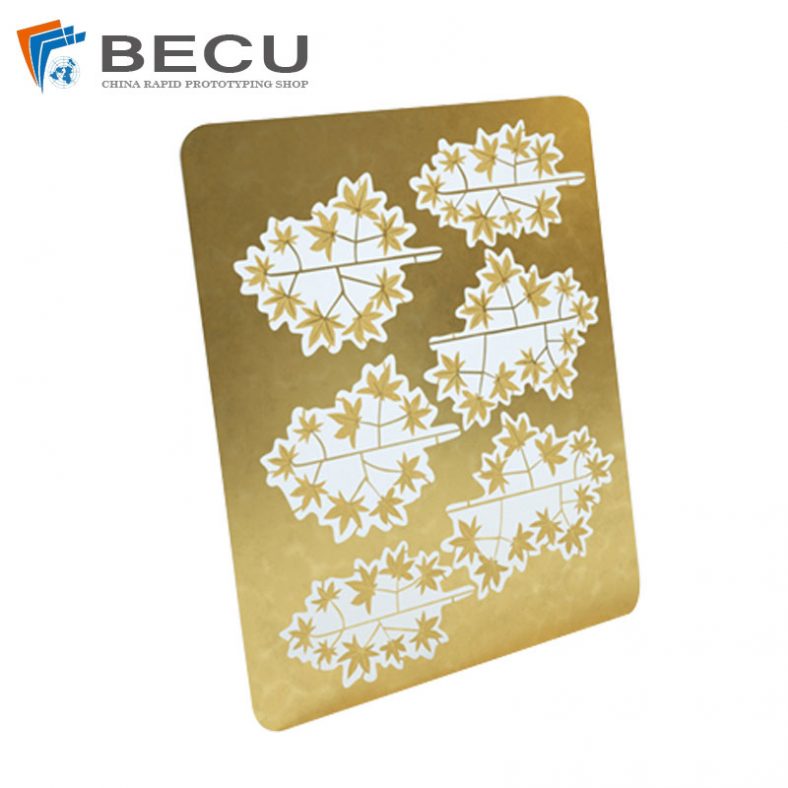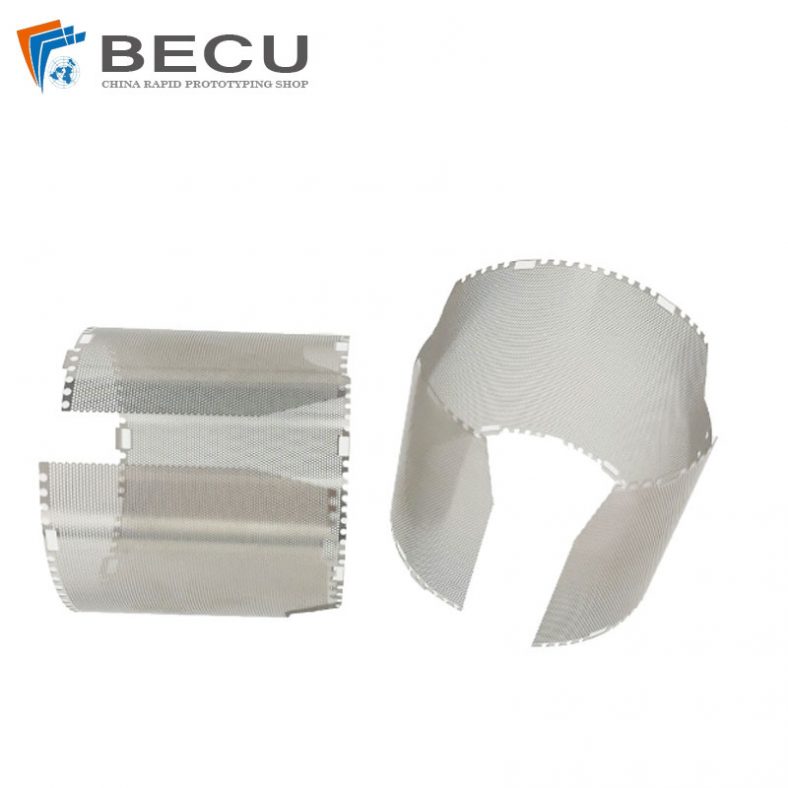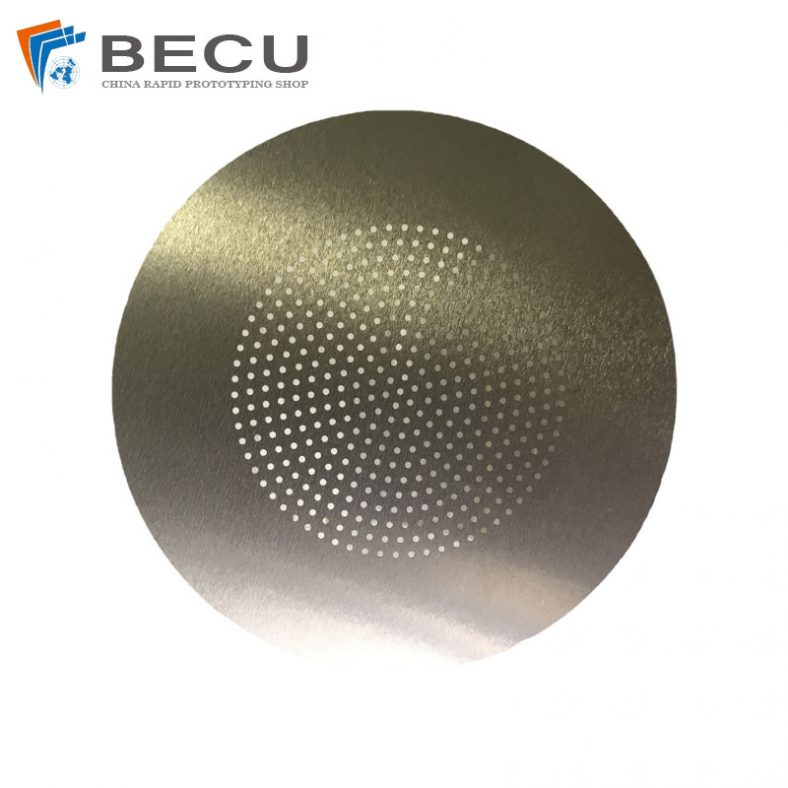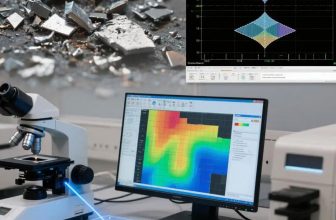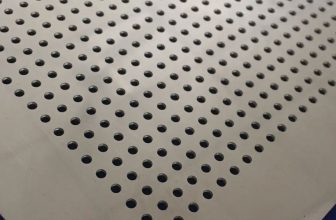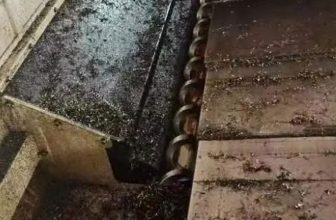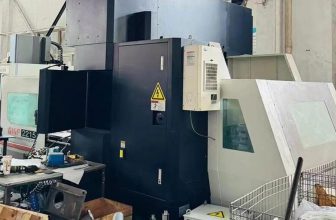Micro-Electro-Mechanical Systems (MEMS) represent a transformative technology that integrates mechanical and electrical components at the microscale, enabling applications in sensors, actuators, microfluidics, and advanced packaging. A cornerstone of MEMS fabrication is the ability to create precise, high-aspect-ratio structures in silicon, the material of choice due to its excellent mechanical properties, compatibility with integrated circuit (IC) processes, and widespread availability. Deep Reactive Ion Etching (DRIE), a specialized subclass of Reactive Ion Etching (RIE), has emerged as a pivotal technique for achieving these structures, enabling the creation of deep, steep-sided trenches and holes with aspect ratios often exceeding 30:1. This article explores the development of DRIE for silicon-based MEMS devices, tracing its historical evolution, technical advancements, process mechanisms, challenges, and applications. It also provides detailed comparisons of DRIE techniques and their impact on MEMS fabrication.
DRIE was developed to address the limitations of traditional etching methods, such as wet chemical etching and conventional plasma etching, which were largely isotropic and unsuitable for deep, anisotropic structures. Introduced in the mid-1990s, DRIE revolutionized MEMS fabrication by offering unprecedented control over etch profiles, enabling the production of complex three-dimensional (3D) microstructures. The technology has since become indispensable in industries ranging from automotive to biomedical, underpinning innovations like accelerometers, gyroscopes, and microneedles. This article aims to provide a comprehensive, scientific overview of DRIE, emphasizing its role in advancing silicon-based MEMS and its ongoing evolution to meet emerging demands.
Historical Context and Evolution of Etching Technologies
Early Etching Techniques
The development of DRIE is rooted in the broader history of semiconductor microfabrication, which began with the advent of integrated circuits in the 1950s. Early silicon etching relied on wet chemical etching, using solutions like potassium hydroxide (KOH) or ethylene diamine pyrocatechol (EDP). These methods exploited the anisotropic etching properties of silicon’s crystal planes, producing structures with smooth surfaces but limited geometric flexibility. For example, KOH etching of (100) silicon wafers results in V-shaped grooves bounded by (111) planes, with a fixed sidewall angle of 54.7°. While effective for simple structures, wet etching suffered from isotropic tendencies in amorphous materials and poor dimensional control for deep features, making it inadequate for advanced MEMS applications.
Dry etching, introduced in the 1970s, offered an alternative by using plasma-based processes to remove material. Conventional plasma etching, such as barrel etching, relied on chemical reactions between reactive species (e.g., fluorine radicals) and the substrate. However, these processes were largely isotropic, leading to undercutting of the mask and poor control over feature dimensions. The introduction of Reactive Ion Etching (RIE) in the late 1970s marked a significant advancement. RIE combined chemical etching with physical ion bombardment, achieved by applying a radio frequency (RF) electric field to a plasma, accelerating ions toward the substrate. This enabled anisotropic etching, as ions preferentially removed material in the vertical direction, reducing sidewall undercutting.
Limitations of Traditional RIE
Despite its advantages, traditional RIE was limited to shallow etch depths, typically a few microns, due to constraints in plasma density and ion energy control. The coupling of plasma generation and ion acceleration in parallel-plate RIE systems made it challenging to optimize etch rate and anisotropy simultaneously. For MEMS applications requiring deep trenches (10–600 µm), RIE struggled to maintain vertical sidewalls and high mask selectivity. Additionally, isotropic etching tendencies in fluorine-based chemistries, commonly used for silicon, further limited the achievable aspect ratios.
The need for deeper, more precise structures in MEMS, such as through-silicon vias (TSVs) and high-aspect-ratio trenches, drove the development of advanced etching technologies. By the early 1990s, researchers recognized that achieving deep, anisotropic etching required innovations in plasma generation, sidewall passivation, and process control. These efforts culminated in the development of DRIE, a breakthrough that transformed MEMS fabrication.
Emergence of Deep Reactive Ion Etching
DRIE was pioneered in the mid-1990s, with significant contributions from Robert Bosch GmbH, which patented the Bosch process, also known as time-multiplexed etching. Introduced in 1994, the Bosch process addressed the limitations of traditional RIE by alternating between etching and passivation cycles, enabling deep, anisotropic etching with high aspect ratios. Concurrently, the cryogenic DRIE process, which operates at low temperatures (around −110 °C), emerged as an alternative, leveraging temperature-dependent passivation to achieve smooth sidewalls. These innovations marked the beginning of DRIE’s dominance in MEMS fabrication, enabling the production of complex 3D structures with unprecedented precision.
The commercialization of DRIE systems by companies like Surface Technology Systems (STS, now SPTS Technologies), Alcatel Vacuum Technology, and PlasmaTherm accelerated its adoption. By the late 1990s, DRIE had become the standard for bulk micromachining in MEMS, supporting applications in automotive sensors, consumer electronics, and biomedical devices. Over the subsequent decades, DRIE evolved through advancements in hardware, process chemistries, and control strategies, addressing challenges like sidewall roughness, etch uniformity, and mask selectivity.
Fundamentals of Deep Reactive Ion Etching
Principles of DRIE
DRIE is a plasma-based etching process that combines chemical and physical mechanisms to achieve highly anisotropic etching of silicon. The process occurs in a vacuum chamber, where a silicon wafer, patterned with a mask (e.g., photoresist, silicon dioxide, or metal), is exposed to a plasma containing reactive ions and neutral species. The plasma is generated by applying RF power to a gas mixture, typically containing fluorine-based gases like sulfur hexafluoride (SF6) for etching and fluorocarbon gases like octafluorocyclobutane (C4F8) for passivation.
The key to DRIE’s anisotropy lies in its ability to protect the sidewalls of etched features while allowing vertical etching. This is achieved through two primary mechanisms: cyclical passivation (Bosch process) and continuous passivation (cryogenic process). In the Bosch process, etching and passivation steps alternate rapidly, typically every 5–10 seconds, to maintain vertical sidewalls. In the cryogenic process, low temperatures slow isotropic chemical reactions, allowing ion-driven etching to dominate. Both methods rely on Inductively Coupled Plasma (ICP) systems, which decouple plasma generation from ion acceleration, providing high plasma density and precise control over ion energy.
Bosch Process
The Bosch process, patented by Robert Bosch GmbH, is the most widely used DRIE technique. It consists of three main steps, repeated cyclically:
- Passivation (Deposition): A fluorocarbon polymer (e.g., (CF2)n) is deposited on all surfaces, including the sidewalls and bottom of the etched feature, using a C4F8 plasma. This polymer acts as a protective layer, preventing lateral etching.
- Bottom Film Etching: A low-bias SF6 plasma or directional ion bombardment removes the polymer from the bottom of the feature, exposing the silicon substrate. The sidewalls remain protected due to the directional nature of the ions.
- Silicon Etching: An SF6 plasma generates fluorine radicals, which chemically etch the exposed silicon isotropically. The sidewall polymer prevents lateral etching, ensuring anisotropy.
The cyclic nature of the Bosch process results in characteristic “scalloping” on the sidewalls, where each cycle leaves a nanoscale ripple. The scallop size depends on the cycle duration and etching conditions, typically ranging from 10–100 nm. The Bosch process achieves etch rates of 10–20 µm/min, aspect ratios up to 100:1, and excellent mask selectivity, making it ideal for deep trenches and TSVs.
Cryogenic Process
The cryogenic DRIE process operates at low temperatures, typically −100 to −120 °C, achieved by cooling the wafer with liquid nitrogen. The process uses a mixture of SF6 and oxygen (O2) gases, where oxygen forms a thin silicon oxyfluoride (SiOxFy) layer on the sidewalls, acting as a passivation layer. The low temperature slows isotropic chemical etching, allowing ion bombardment to dominate, resulting in highly anisotropic etching with smooth sidewalls.
Unlike the Bosch process, cryogenic DRIE is a continuous process, eliminating scalloping and producing optically smooth sidewalls. However, it is more susceptible to micro-masking, where etch byproducts deposit on the substrate, causing defects. Cryogenic DRIE is preferred for applications requiring smooth surfaces, such as optical MEMS and nanostructures, but its complexity and sensitivity to temperature control limit its widespread use compared to the Bosch process.
Inductively Coupled Plasma (ICP) Systems
Both Bosch and cryogenic DRIE rely on ICP systems, which offer high plasma density and independent control of ion energy. In an ICP reactor, RF power is applied to a coil surrounding the chamber, generating a magnetic field that induces a high-density plasma. A separate RF bias is applied to the substrate holder, controlling ion energy and directionality. This decoupling allows for faster etch rates (up to 20 µm/min) and improved anisotropy compared to traditional parallel-plate RIE systems.
ICP systems also enable low-pressure operation (1–100 mTorr), reducing ion scattering and enhancing anisotropy. Advanced ICP reactors, such as the PlasmaTherm Versaline DSE and SPTS Omega Rapier, incorporate features like high-power ICP sources (up to 2000 W), precise gas flow control, and wafer cooling systems, optimizing DRIE performance for MEMS applications.
Technical Advancements in DRIE
Hardware Innovations
The evolution of DRIE has been driven by advancements in etching equipment, particularly ICP reactors. Early DRIE systems, developed in the 1990s, were limited by low plasma density and poor uniformity. Modern systems incorporate several innovations:
- High-Power ICP Sources: Increased RF power (100–2000 W) enhances plasma density, improving etch rates and uniformity.
- Retractable Quartz Liners: These collect nonvolatile byproducts, reducing chamber contamination and improving repeatability.
- Advanced Wafer Cooling: Helium backside cooling and low-temperature cathodes (−50 °C or lower) maintain precise temperature control, critical for cryogenic DRIE.
- Pulsed Biasing Schemes: Pulsed RF bias reduces notching at dielectric interfaces, improving profile control for silicon-on-insulator (SOI) wafers.
- Mass Flow Controllers: Precise control of gas flow rates ensures consistent etch and passivation cycles, minimizing variations.
These advancements have enabled etch rates up to 20 µm/min, aspect ratios exceeding 100:1, and uniformity within ±5% across 6-inch wafers. Companies like Oxford Instruments, PlasmaTherm, and SPTS Technologies continue to refine DRIE systems, targeting applications in MEMS, advanced packaging, and nanotechnology.
Process Chemistry Optimization
The choice of process gases and their ratios significantly impacts DRIE performance. Fluorine-based chemistries, particularly SF6, are preferred for silicon etching due to their high reactivity and volatile reaction products (e.g., SiF4). However, achieving anisotropy requires careful passivation. In the Bosch process, C4F8 is the standard passivation gas, forming a Teflon-like polymer. Variations, such as hydrogen-assisted DRIE, replace C4F8 with H2/O2/SF6 mixtures, reducing polymer deposition and enabling finer features.
Cryogenic DRIE relies on SF6/O2 mixtures, with oxygen concentrations typically 5–10% to form the SiOxFy passivation layer. Recent studies have explored additives like argon (Ar) or chlorine (Cl2) to enhance ion bombardment or modify sidewall chemistry, improving etch selectivity and profile control. Optimizing gas flow rates, pressure, and RF power is critical to balancing etch rate, anisotropy, and sidewall quality.
Mask Materials and Selectivity
The mask material plays a crucial role in DRIE, as it must withstand prolonged exposure to reactive ions and fluorine radicals. Common mask materials include:
- Photoresist: Widely used for shallow etches (<50 µm) due to its ease of patterning. However, photoresist has low selectivity (10:1 to 20:1) and erodes rapidly in deep etches.
- Silicon Dioxide (SiO2): Offers higher selectivity (50:1 to 100:1) and is compatible with IC processes. SiO2 masks are suitable for etches up to 100 µm but require thicker layers for deeper features.
- Silicon Nitride (Si3N4): Similar to SiO2, with selectivity up to 100:1. It is less common due to higher deposition costs.
- Metal Masks (e.g., Al, Ni): Provide excellent selectivity (>200:1) and are used for ultra-deep etches (>300 µm). However, metal masks can cause micro-masking if sputtered during etching.
- Gallium Ion Implantation: Used in cryogenic DRIE as an etch mask, offering high selectivity and compatibility with nanofabrication.
Recent advancements include multi-layer masks (e.g., Al/SiO2) for diamond etching and hard masks transferred via nanoimprint lithography, enabling sub-100 nm features. Table 1 compares common mask materials for DRIE.
Table 1: Comparison of Mask Materials for DRIE
| Mask Material | Selectivity (Si:Mask) | Typical Thickness (µm) | Advantages | Disadvantages | Applications |
|---|---|---|---|---|---|
| Photoresist | 10:1–20:1 | 1–5 | Easy to pattern, low cost | Low selectivity, erodes in deep etches | Shallow etches (<50 µm) |
| Silicon Dioxide | 50:1–100:1 | 0.5–2 | High selectivity, IC-compatible | Requires thick layers for deep etches | Medium-depth etches (50–100 µm) |
| Silicon Nitride | 50:1–100:1 | 0.5–2 | High selectivity, durable | Higher deposition cost | Medium-depth etches (50–100 µm) |
| Aluminum | >200:1 | 0.1–1 | Excellent selectivity, robust | Risk of micro-masking, complex patterning | Deep etches (>100 µm) |
| Nickel | >200:1 | 0.1–1 | Excellent selectivity, robust | Risk of micro-masking, complex patterning | Deep etches (>100 µm) |
| Gallium Implant | >100:1 | N/A (implantation) | High selectivity, nanofabrication-friendly | Limited to cryogenic DRIE, specialized | Nanostructures, ultra-deep etches |
Sidewall Passivation Mechanisms
Sidewall passivation is critical to DRIE’s anisotropy. The Bosch process uses cyclical passivation, depositing a fluorocarbon polymer during the C4F8 cycle, which is selectively removed from the bottom during the SF6 cycle. The polymer’s thickness (10–100 nm per cycle) and composition depend on gas flow, pressure, and RF power. Optimizing the etch-to-passivation ratio minimizes scalloping and ensures vertical sidewalls.
Cryogenic DRIE employs continuous passivation, where the SiOxFy layer forms in situ due to the reaction of oxygen with silicon and fluorine. The layer’s thickness (1–10 nm) is temperature-dependent, requiring precise control to avoid over-passivation, which can reduce etch rates. Recent research has explored hybrid passivation strategies, combining cyclical and continuous mechanisms, to achieve ultra-high aspect ratios (>100:1) with smooth sidewalls.
Challenges in DRIE
Sidewall Roughness and Scalloping
The Bosch process’s cyclical nature produces nanoscale scallops on sidewalls, typically 10–100 nm in size. While acceptable for many MEMS applications, scalloping can degrade performance in optical devices or microneedles, where smooth surfaces are critical. Reducing scallop size requires shorter cycle times and optimized gas flows, but this often lowers etch rates. Cryogenic DRIE eliminates scalloping but introduces other challenges, such as micro-masking.
Microloading and Aspect Ratio Dependent Etching (ARDE)
Microloading refers to the variation in etch rate due to differences in exposed silicon area. High-density patterns deplete reactive species, reducing etch rates in narrow features. Aspect Ratio Dependent Etching (ARDE) occurs when etch rates decrease with increasing aspect ratio, as fluorine radicals struggle to reach the bottom of deep trenches. Both phenomena lead to non-uniform etching, affecting device performance. Mitigation strategies include adjusting gas flows, pressure, and RF power, or using pulsed etching to enhance reactant transport.
Notching and Footing
Notching occurs at the interface of silicon and an underlying dielectric layer (e.g., SiO2 in SOI wafers), where charge accumulation causes lateral etching. Footing, a related defect, results in a widened etch profile at the base. Pulsed biasing and optimized RF power reduce notching by minimizing charge buildup. Advanced systems also use endpoint detection to stop etching before notching occurs.
Mask Erosion and Selectivity
Deep etches require masks with high selectivity to withstand prolonged plasma exposure. Photoresist masks erode rapidly, limiting etch depths to <50 µm. Hard masks like SiO2 or metals improve selectivity but introduce challenges like micro-masking, where sputtered mask material redeposits on the substrate, causing defects. Careful mask design and process optimization are essential to balance selectivity and etch quality.
Uniformity and Tilt
Etch uniformity across a wafer is critical for high-yield MEMS production. Non-uniform plasma distribution or chamber conditions can cause variations in etch depth (±5–10%). Tilt, where trenches deviate from verticality, results from asymmetric ion bombardment or mask misalignment. Advanced ICP systems with uniform plasma sources and precise wafer alignment minimize these issues.
Applications of DRIE in Silicon-Based MEMS
Sensors and Actuators
DRIE is integral to the fabrication of MEMS sensors and actuators, enabling high-aspect-ratio structures like cantilevers, membranes, and proof masses. For example:
- Accelerometers: DRIE creates deep trenches in SOI wafers to define movable proof masses, achieving high sensitivity (e.g., 13.6 mV/G in seismic accelerometers).
- Gyroscopes: Bosch DRIE enables 100 µm-deep trenches for vibratory structures, as seen in Bosch’s early gyroscopes for automotive stability control.
- Pressure Sensors: DRIE forms thin diaphragms with precise thickness control, enhancing sensitivity and linearity.
Microfluidics
DRIE is widely used in microfluidic devices, creating channels, vias, and pillars for applications like lab-on-chip systems and drug delivery. For example, DRIE-etched microchannels with aspect ratios >10:1 enhance flow boiling in heat sinks, addressing high heat fluxes in microelectronics. SEM images show microfluidic elements like via holes and micropillars, demonstrating DRIE’s precision.
Biomedical Devices
DRIE enables the fabrication of microneedles for transdermal drug delivery and diagnostics. Hollow silicon microneedles, etched with DRIE, feature 30 µm-diameter bores and 300 µm depths, allowing capillary filling with interstitial fluid. These devices penetrate skin without damage, supporting applications like continuous glucose monitoring.
Optical MEMS
In optical MEMS, DRIE creates structures like micro-pore X-ray optics and gratings. For example, DRIE-etched silicon sidewalls with sub-nm roughness serve as X-ray mirrors, enabling lightweight optics for space research. Cryogenic DRIE is preferred for its smooth sidewalls, critical for optical performance.
Advanced Packaging
DRIE is essential for through-silicon vias (TSVs) in 3D IC packaging, enabling high-density interconnects. TSVs, with depths up to 600 µm and aspect ratios >20:1, are etched using the Bosch process, ensuring vertical profiles and high throughput. DRIE also supports plasma dicing, creating irregular chip shapes for flexible electronics.
Comparison of DRIE Techniques
Table 2 compares the Bosch and cryogenic DRIE processes, highlighting their strengths and limitations.
Table 2: Comparison of Bosch and Cryogenic DRIE Processes
| Parameter | Bosch Process | Cryogenic Process |
|---|---|---|
| Mechanism | Cyclical etching/passivation | Continuous etching with temperature-dependent passivation |
| Etch Rate (µm/min) | 10–20 | 5–15 |
| Aspect Ratio | Up to 100:1 | Up to 50:1 |
| Sidewall Quality | Scalloped (10–100 nm) | Smooth (<10 nm roughness) |
| Temperature | Ambient to 50 °C | −100 to −120 °C |
| Gas Chemistry | SF6 (etch), C4F8 (passivation) | SF6/O2 |
| Mask Selectivity | High (50:1–200:1) | Moderate (20:1–100:1) |
| Advantages | High etch rate, robust, widely used | Smooth sidewalls, suitable for optical MEMS |
| Disadvantages | Scalloping, complex process control | Micro-masking, temperature sensitivity |
| Applications | TSVs, accelerometers, microfluidic channels | Nanowires, optical MEMS, microneedles |
Recent Advances and Future Directions
Nanoscale DRIE
Recent advancements have extended DRIE to nanoscale features, enabling silicon nanowire arrays with diameters as small as 30 nm. Cryogenic DRIE, combined with electron-beam or nanoimprint lithography, achieves ultra-high aspect ratios (>50:1) for applications in energy harvesting, photovoltaics, and biomedical devices. Hydrogen-assisted DRIE, using H2/O2/SF6 mixtures, further refines nanoscale etching, reducing polymer deposition and enabling hollow microneedles.
Non-Silicon Materials
DRIE has been adapted for hard-to-etch materials like silicon carbide (SiC), quartz, and diamond. For SiC, time-multiplexed etch-passivate (TMEP) processes achieve aspect ratios >5:1, supporting power MEMS and harsh-environment sensors. Diamond DRIE, using Al/SiO2 hard masks, enables 150 µm-thick components with sub-200 nm roughness, paving the way for high-performance MEMS.
Process Integration
Integrating DRIE with other fabrication processes, such as anodic bonding and 3D printing, enhances MEMS functionality. For example, DRIE-etched microneedles are combined with wet etching to create octagonal needle structures, reducing process complexity. Hybrid metrology, combining scatterometry, AFM, and SEM, improves characterization of DRIE-etched nanostructures, ensuring quality control.
Future Challenges
Future DRIE development must address scalability, cost, and environmental concerns. High-throughput systems with larger wafer sizes (8–12 inches) are needed to meet industrial demands. Reducing fluorocarbon gas usage and improving chamber cleaning will mitigate environmental impact. Additionally, adaptive process control using machine learning could optimize etch profiles in real-time, enhancing yield and uniformity.
Conclusion
Deep Reactive Ion Etching has transformed silicon-based MEMS fabrication, enabling the creation of high-aspect-ratio structures with unprecedented precision. From its origins in the Bosch process to modern advancements in cryogenic and nanoscale etching, DRIE has driven innovations in sensors, microfluidics, biomedical devices, and advanced packaging. Despite challenges like scalloping, microloading, and mask erosion, ongoing developments in hardware, chemistry, and process integration continue to expand DRIE’s capabilities. As MEMS applications grow in complexity, DRIE will remain a cornerstone technology, shaping the future of microscale engineering.

